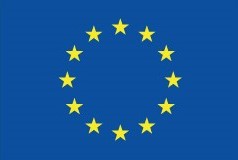- Home
- EU PiG – Reducing pig mortality through a high standard of care
EU PiG – Reducing pig mortality through a high standard of care
The number of piglets produced per sow has increased by 2%, from 15.5 to 15.8, through a system that focuses on a high standard of care throughout the breeding herd on Theo's farm.
Ambassador: Theo Vernooij, Netherlands
Publication date: February 2020
Theme: Precision production
Challenges: Reducing pig mortality
Theo invests in good, animal-orientated management processes on the farm, including time assessing the viability of piglets from a welfare perspective. He also spends a lot of time focusing on the condition, housing and feeding of the sows, as good nutrition during pregnancy is the basis of a successful litter.
A lot of time is spent taking care of the birth and the piglets, with an extra employee hired to take care of the piglets after birth. They have installed extra heat lamps for the piglets and also provide better feed. This is a little more expensive per kg, but they don’t need to feed as much, so it doesn’t add any cost.
High standard of care
Benefits
- Piglet mortality decreased, and as a result, 2% more piglets were weaned per sow. This increased from 15.5 to 15.8
- Variable production costs were reduced by 1.5% per piglet
- The entire cost of piglet production was 0.4% lower per piglet
- Public opinion is shifting towards higher welfare standards. This system increases piglet welfare
Costs
- The extra employee costs €600 a week
- Increased labour costs resulted in an increase in fixed costs of 2.8% per piglet
- Additional bedding and nesting material cost €1 per sow per year
- The cost of the feed remains the same
In order to reduce piglet mortality, a checklist was developed from extensive research of best practices across 84 farms. Farm staff and vets completed a questionnaire looking at the factors that led to reduced piglet mortality. The questionnaires were then analysed, and the most relevant factors that were linked to the loss of piglets were identified.
Each day, the employees follow the checklist and all work is based on the standardised practice described in the protocols.
Protocol: Cleaning and disinfecting
Protocol for health at farrowing
Back to: EU PiG – Precision production
Case studies
Technical reports
Precision production best practice challenges
Increasing overall farm sustainability
Dashboard systems/benchmarking
Increasing gilt and sow performance
Contact us
To access more information, contact RPIG (Netherlands): Jos Peerlings or EUPig@ahdb.org.uk
This project has received funding from the European Union`s Horizon 2020 research and innovation programme under grant agreement No 727933.
 Government logo
Government logo

